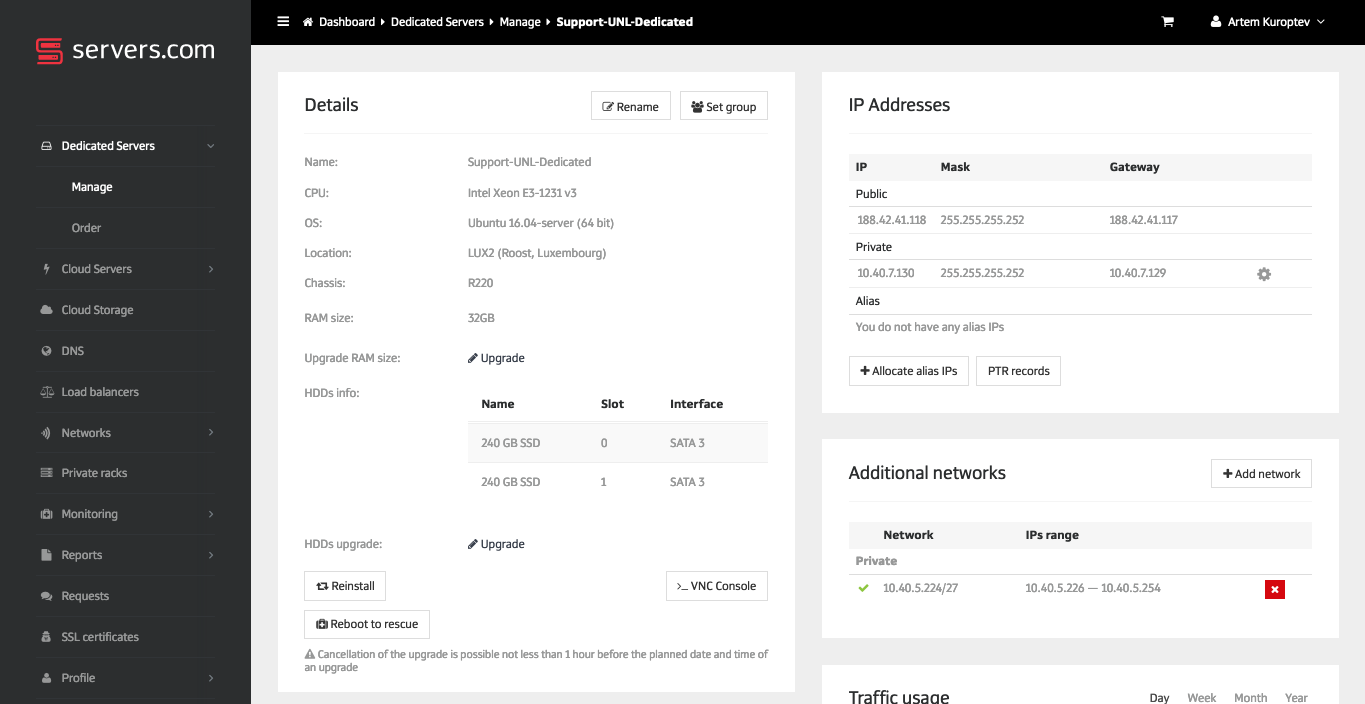Locations
What are “Locations”?
When you’re ordering a server, the availability of a specific configuration depends on the location you choose in the right sidebar.

For a provisioned server, its location is displayed on the server details page.

Each location represents the complex of hardware and software in a data center, allowing us to provide hosting services. It’s a design pattern in our hosting platform. Let's say we would like to offer our services in a data center in London. In that case, we rent data center space from a wholesale data center provider in London; we install server racks, network equipment, servers, connect data networks and power, configure our software platform. As a result, we get a new location in the UK.
There can be more than one location in the same data center. The difference between locations might include different features and server chassis.
Redundancy by default
By default, networks and power are redundant in our locations.
Network redundancy
Each server has five network ports. Two ports connect to a pair of switches in the private network, two ports connect to a pair of switches in the public network, and one port is connected to the out-of-band (OOB) management network. Link aggregation (aka link bonding) is configured for each pair of public and private ports. Leaf switches, spine switches, and routers are redundant too.
On the hardware level, each server is equipped with two dual-port network interface controllers (NICs). The out-of-band management platform has a separate NIC, which is not visible on the operating system level.
Network redundancy allows a server to stay connected should one of the network links fails.
Power redundancy
Each server rack uses two independent power feeds. The power scheme for a specific rack depends on the server chassis type used in this rack.
Racks which are hosting servers with one power supply unit (PSU) are equipped with Automatic Transfer Switches (ATS). ATS switches a load between two sources – when the primary power source fails, ATS automatically transfers the load to the secondary source.
Racks which are hosting servers having two PSU are equipped with two Power Distribution Units (PDU) per rack – one per power feed. Each PSU of a dual-PSU server is plugged into different PDU (ie different power feed).
In both schemes, a server has a redundant power source with automatic switching.
Reduced redundancy locations
Power and network redundancy have their cost. And for some tasks, our clients prefer economy over redundancy. Said tasks include highly distributed compute workloads, staging environments, and some others. That is why in addition to our generic locations, we offer so-called “reduced redundancy locations”.
Servers don't have network or power redundancy in reduced redundancy locations. Some features, such as "L2 segments", are also not available in reduced redundancy locations.
Reduced redundancy locations have the following icon next to their names in the customer portal:
